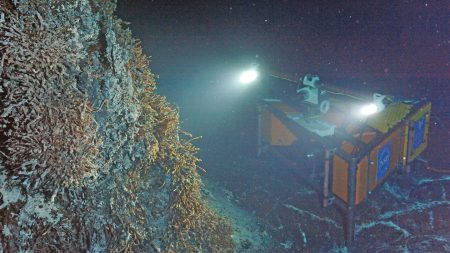When Rivers Turn Toxic: How California’s Tijuana River is Poisoning the Air
The Tijuana River, flowing through the U.S.-Mexico border region, has long been known for carrying untreated sewage and toxic pollutants toward the Pacific Ocean. While environmental concerns typically focus on water contamination, researchers have discovered an alarming new threat: the polluted water is actively releasing dangerous gases into the air, creating what scientists describe as an unprecedented air pollution crisis in Southern California neighborhoods.
For decades, residents near the Tijuana River in San Diego’s South Bay region have complained about the river’s foul odor, particularly the unmistakable smell of rotten eggs that permeates their communities. What many didn’t realize was that this offensive smell signaled a serious health hazard. The odor comes from hydrogen sulfide—a gas produced when sewage breaks down—which researchers have now measured at levels thousands of times higher than what’s typically found in urban environments. In the summer of 2024, as odor complaints multiplied, atmospheric chemist Benjamin Rico and his colleagues from the University of California, San Diego decided to investigate the situation firsthand.
When Rico’s team visited the area, local residents consistently reported the same experience: an overwhelming rotten egg smell that intensified at night and clearly originated from the river. Following residents’ guidance to a particularly troublesome spot where turbulent water created foam, Rico was overwhelmed by what he describes as “the worst foul smell I’ve ever experienced.” This encounter prompted the researchers to establish a mobile air quality laboratory in a nearby neighborhood to measure precisely what was being released into the community’s air. Their findings, published in the August 28 issue of Science, revealed a disturbing reality that exceeded their expectations.
The measurements showed hourly hydrogen sulfide averages of 2,100 parts per billion—nearly 70 times higher than the region’s air quality standard and about 2,000 times the typical urban level of just 1 part per billion. More alarming still were the nighttime readings, when decreased wind activity allowed the gas to accumulate, reaching peaks of 4,500 parts per billion. In a telling natural experiment, when wastewater was unexpectedly diverted to a treatment plant during the study period, hydrogen sulfide levels dropped dramatically, though they still frequently exceeded recommended safety thresholds. This confirmed the direct relationship between the river’s polluted water and the hazardous air quality affecting surrounding communities.
The health implications of such extreme hydrogen sulfide exposure remain incompletely understood. While the gas is known to cause headaches, respiratory issues, and other health problems at high concentrations, researchers haven’t yet determined whether the Tijuana River’s emissions are directly responsible for reported health complaints in the area. What’s clear, however, is that this situation represents a new understanding of how water pollution can transform into air pollution, with potential implications for contaminated waterways worldwide. Rico’s team suggests their findings may be just the beginning of understanding how polluted rivers globally could be contributing to air quality problems in adjacent communities.
Perhaps most heartbreaking about this environmental crisis is its impact on the most vulnerable residents. Rico recounts watching children play soccer across the street from the river while his instruments registered hydrogen sulfide levels of 1,500 parts per billion. “It was hard to see that that was normal for them… That was their reality,” he says, highlighting the environmental justice dimension of the crisis. As research continues, these findings underscore the urgent need for comprehensive solutions that address not just water quality in the Tijuana River, but also the toxic air pollution it generates—a previously overlooked threat to public health in communities that have already endured environmental challenges for generations.















